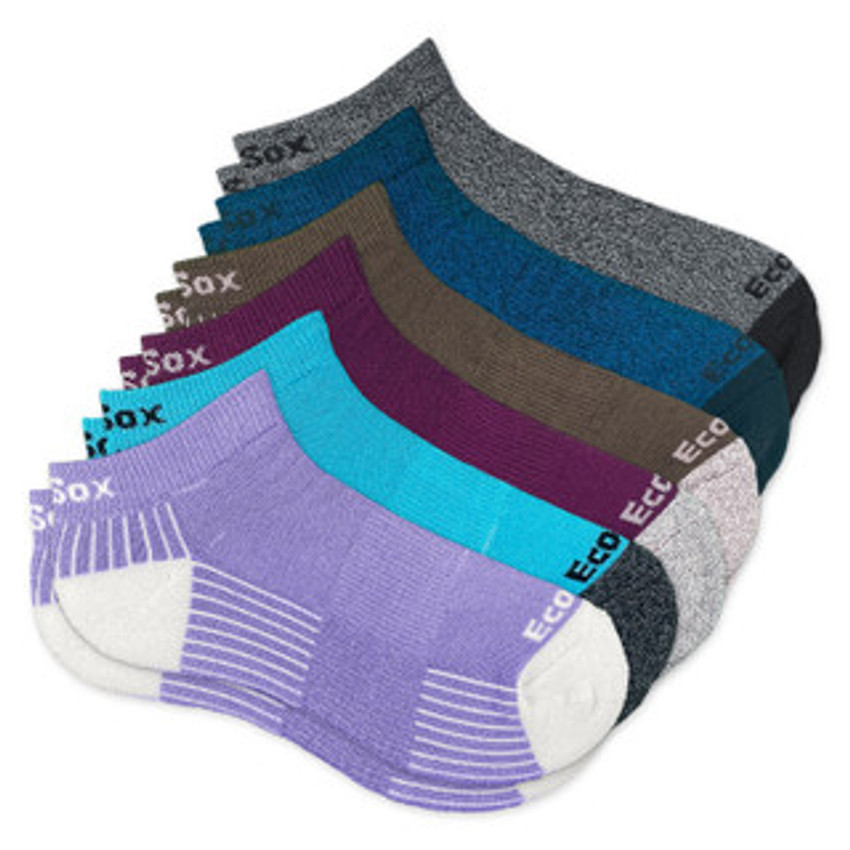Causes of Leg Soreness: Insights and Relief Tips
Posted by EcoSox on Apr 25th 2024
If you often experience soreness in your legs, you're not alone. Many factors can contribute to leg soreness, from muscle strains and overuse injuries to underlying medical conditions. In this article, we will explore what is leg soreness and what can cause soreness in legs, and provide you with relief tips to help alleviate discomfort.
Defining Leg Soreness
Leg soreness, also known as leg pain, can have various causes and manifestations. It can range from muscle cramps and spasms to more serious conditions that require immediate treatment.
Muscle cramps also referred to as "Charley horses," can trigger sudden and sharp pain in the legs as the muscles contract. Leg soreness may also result from wear and tear, overuse, injuries, or underlying health conditions affecting joints, bones, muscles, ligaments, tendons, nerves, or other soft tissues.
If you're wondering what can cause soreness in your legs, leg soreness can manifest in various forms and intensities, impacting your daily activities and overall well-being. Understanding the nature of leg soreness effectively manages and addresses discomfort in your lower limbs.
What Can Cause Soreness in Legs?
Leg soreness can have several underlying causes, ranging from muscle strains and overuse injuries to specific medical conditions. Knowing what can cause soreness in your legs can help you identify the source of your leg soreness and take appropriate measures for relief. Here are some common causes of leg soreness.
Muscle Strains and Overuse Injuries
One of the most common causes of leg soreness is muscle strain and overuse injuries. These occur when your muscles are stretched beyond their limits, resulting in microscopic tears and inflammation. Engaging in intense physical activities such as running, jumping, or weightlifting without proper warm-up or recovery can increase the risk of these injuries.
Shin Splints and Stress Fractures
Shin splints and stress fractures are often associated with intense physical activities that involve repetitive stress on the legs, such as running or high-impact sports. Shin splints cause pain along the inner edge of the shinbone, while stress fractures are small cracks in the bones. Both conditions can lead to significant leg soreness and discomfort.
Restless Legs Syndrome and Nocturnal Leg Cramps
Restless legs syndrome is a neurological condition characterized by an irresistible urge to move the legs, usually during periods of rest. This can cause discomfort and even pain in the legs. Nocturnal leg cramps, on the other hand, are sudden, painful muscle contractions that occur during sleep. Both conditions can contribute to leg soreness and disrupt quality sleep.
Achilles Tendinitis and Other Tendon Issues
Achilles tendonitis, an inflammation of the Achilles tendon, and other tendon issues like tendinosis can result in leg soreness. These conditions often occur due to overuse or repetitive stress on the tendons. Athletes who frequently engage in activities that involve jumping or sudden changes in direction, such as basketball or tennis, are especially prone to these injuries.
Relief Tips for Leg Soreness
While leg soreness can be bothersome, there are several steps you can take to find relief. Here are some effective strategies to relieve leg soreness.
Compression Socks
One highly effective solution for alleviating leg soreness is the utilization of compression socks, such as the EcoSox Bamboo Compression Socks (OTC). These specially designed socks provide graduated pressure that stimulates circulation, reduces muscle vibration, and aids in venous return.
Compression socks offer targeted support to the muscles and enhance oxygen delivery to the tissues they can significantly improve recovery, reduce discomfort, and contribute to overall leg wellness.
Stretching and Gentle Exercises
Engaging in light stretching exercises can improve flexibility and circulation in your legs, providing relief from soreness. Low-impact exercises can also be beneficial, as they help in maintaining muscle tone without subjecting your legs to excessive strain. These activities stimulate blood flow, loosen tight muscles, and contribute to overall leg health.
Quadriceps Stretch
The quadriceps stretch is a simple yet effective exercise for stretching the front of your thigh (quadriceps muscles). Stand on one leg and hold onto a chair or wall for balance. Bring your other foot up behind you, grabbing your ankle and gently pulling your heel towards your glutes to stretch the front of your thigh.
Hamstring Stretch
The hamstring stretch targets the back of the thigh (hamstring muscles). Sit on the floor with one leg straight and the other leg bent with the sole against the inner thigh. Reach forward towards your toes, keeping your back straight, to stretch the back of your thigh.
Calf Stretch
The calf stretch is a simple exercise that targets the calf muscles. To do so, stand facing a wall with your hands against it at shoulder height. Step back with one foot, keeping it flat on the ground, and bend the front knee. Lean forward to feel the stretch in the calf of the back leg.
Swimming
Swimming is a low-impact, whole-body exercise that can be especially beneficial for improving circulation and strengthening leg muscles. It offers resistance without the jarring impact of high-impact activities, making it a great option for individuals experiencing leg soreness.
Cycling
Riding a bicycle is another low-impact exercise that provides an effective way to maintain muscle tone and cardiovascular fitness without subjecting your legs to excessive strain. It's a smooth, rhythmic activity that can help stimulate blood flow, loosen tight muscles, and contribute to overall leg health.
Hot and Cold Therapy
Alternating between hot and cold treatments can effectively reduce inflammation and soothe sore muscles. Warm compresses applied for 15-20 minutes help to relax and loosen muscles, while cold compresses for the same duration help to reduce swelling and numb pain. This contrast therapy can enhance blood circulation, alleviate discomfort, and promote faster recovery.
Elevate Your Legs
Elevating your legs above heart level aids in reducing swelling and relieving leg soreness. Propping up your legs with pillows while resting or sleeping encourages the drainage of excess fluid from the affected area, thereby decreasing inflammation and discomfort. This simple yet effective technique can make a noticeable difference in easing soreness and promoting recovery
Rest and Recovery
Giving your legs adequate rest allows the muscles and tissues to heal. This means avoiding high-impact activities temporarily, especially those that exacerbate the soreness, and incorporating rest days into your exercise routine. Giving your legs the necessary time to recuperate prevents further strain and promotes the healing process.
When To Seek Medical Help
While most cases of leg soreness can be managed with self-care strategies, know when to seek medical help. If you experience severe and persistent leg soreness, swelling, redness, or numbness, or if your leg soreness is interfering with your daily activities, consult a healthcare professional for a proper diagnosis and treatment.
Relieve Your Leg Soreness Today
Leg soreness can be a common and sometimes frustrating issue. However, by understanding what can cause soreness in your legs and implementing the tips mentioned above, you can find relief and improve your overall leg health. Remember, taking care of your legs helps you live an active and pain-free lifestyle.
The EcoSox Bamboo Compression Socks (OTC) are specially designed socks to alleviate leg soreness. It utilizes graduated pressure to stimulate circulation, reduces muscle vibration, and aids venous return. Targeted muscle support and enhanced oxygen delivery promote faster recovery and overall leg wellness. Relieve your leg soreness with EcoSox today!

